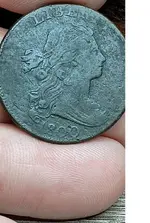PhipsFolly
Hero Member
- Sep 30, 2005
- 638
- 609
- Detector(s) used
- Minelab Sovereign Elite & Sovereign XS, Minelab Equinox 800 and Aquapulse AQ1B
- Primary Interest:
- All Treasure Hunting
I understand Brent and his crew hit it big at Corrigans... Biggest haul in a long time!!!






